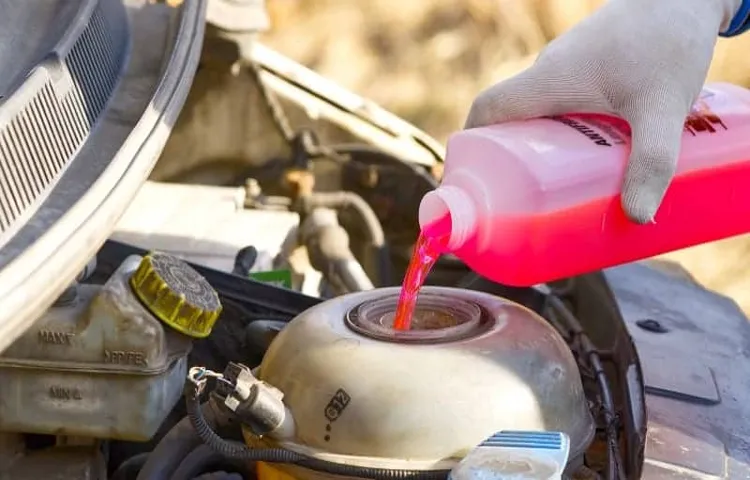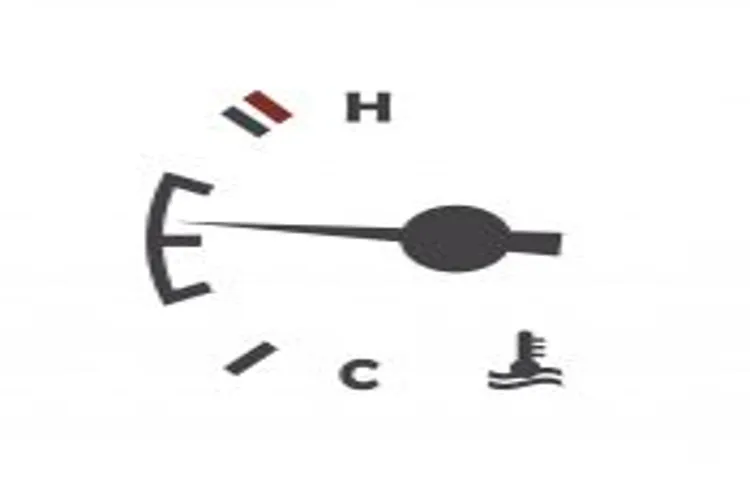Are you someone who is constantly worried about their car’s engine overheating? Have you ever wondered what the optimum coolant temperature for your vehicle is? Well, fret no more, because in this blog, we are going to dive deep into the world of coolant temperatures and find out what is best for your engine’s health! Maintaining the right coolant temperature is crucial for your car’s performance and longevity. Just like how our bodies need to be at the right temperature to function optimally, so does your engine. If the coolant temperature is too low, the engine might not reach its peak performance, and if it’s too high, it can lead to overheating and potential damage.
So, how do you find the sweet spot for your coolant temperature? Well, it depends on a few factors. Different car manufacturers have different recommendations, so it’s always a good idea to consult your vehicle’s owner’s manual for the ideal temperature range. The type of coolant you use also plays a role, as some coolants have different temperature thresholds.
A good rule of thumb is to aim for a coolant temperature of around 195 to 220 degrees Fahrenheit (90 to 105 degrees Celsius). This range generally ensures that your engine is running efficiently without reaching dangerous levels. However, remember that ultimately, it’s best to follow the manufacturer’s guidelines to ensure optimal performance and prevent any potential warranty issues.
Additionally, it’s essential to monitor your coolant temperature regularly. Most modern cars have a temperature gauge on the dashboard that indicates the coolant temperature. If you notice any sudden spikes or drops, it might be a sign of a cooling system issue that needs to be addressed.
To conclude, finding the optimum coolant temperature for your vehicle is crucial for maintaining the health and longevity of your engine. By following the manufacturer’s guidelines and monitoring your coolant temperature regularly, you can ensure that your car runs smoothly and efficiently for years to come. So, next time you hit the road, rest assured knowing that your engine is operating at its best temperature, keeping you worry-free on your journey.
Table of Contents
Why is coolant temperature important?
As a car owner, it’s essential to understand the importance of maintaining the right coolant temperature. The coolant in your vehicle is responsible for regulating the heat produced by the engine. When the engine runs, it generates a significant amount of heat that needs to be controlled to prevent damage.
If the coolant temperature is too low, the engine may not reach its optimal operating temperature, leading to poor fuel efficiency and increased wear and tear. On the other hand, if the coolant temperature is too high, it can cause overheating and potential engine damage. So, what temperature should your coolant be? The ideal range for coolant temperature is typically between 195 and 220 degrees Fahrenheit (90 and 105 degrees Celsius).
However, it’s crucial to refer to your vehicle’s manual to determine the specific temperature range recommended by the manufacturer. By regularly monitoring and maintaining the coolant temperature within the appropriate range, you can ensure optimal engine performance and extend the lifespan of your vehicle.
The role of coolant in your vehicle
coolant temperature, role of coolant in vehicle

Effects of high coolant temperature
high coolant temperature, effects of coolant temperature, engine overheating
Effects of low coolant temperature
The coolant temperature of your vehicle plays a significant role in keeping your engine running smoothly and efficiently. But why is coolant temperature important, you may ask? Well, the coolant is responsible for absorbing the heat generated by the engine and preventing it from overheating. If the coolant temperature is too low, it can lead to a variety of problems.
For starters, the engine may struggle to reach its optimal operating temperature, which can decrease fuel efficiency and increase emissions. Additionally, low coolant temperature can also affect the performance of other engine components, such as the thermostat, which regulates the flow of coolant. In cold weather conditions, low coolant temperature can cause the thermostat to remain closed for longer periods of time, resulting in poor heat circulation and potentially causing damage to the engine.
So, it’s important to keep an eye on your coolant temperature and ensure that it remains within the recommended range for your vehicle.
What is the ideal coolant temperature?
If you’ve ever wondered what temperature your coolant should be, you’re not alone. The ideal coolant temperature is typically around 195 to 220 degrees Fahrenheit (90 to 105 degrees Celsius). This range is considered optimal because it allows the engine to operate efficiently without overheating.
When the coolant temperature is too low, it may not effectively remove heat from the engine, leading to potential issues such as poor fuel efficiency and increased emissions. On the other hand, if the coolant temperature is too high, it can cause the engine to overheat, which can result in engine damage or even a breakdown. It’s important to keep an eye on your coolant temperature gauge or warning lights and take necessary action if the temperature falls outside of the recommended range.
Regularly checking and maintaining your coolant level and quality can help ensure that your engine stays cool and runs smoothly.
Manufacturer recommendations
The ideal coolant temperature for a vehicle can vary depending on the specific manufacturer recommendations. However, in most cases, it is recommended to keep the coolant temperature between 195 and 220 degrees Fahrenheit (90 and 105 degrees Celsius). This temperature range allows for optimal engine performance and efficiency while ensuring that the coolant does not boil or freeze.
It is important to note that exceeding the recommended coolant temperature can lead to engine damage and overheating, causing potential breakdowns and costly repairs. Therefore, it is always best to follow the manufacturer’s guidelines to maintain the health and longevity of your vehicle.
Considering your climate
coolant temperature
How to measure coolant temperature
One common question car owners have is, “What temperature should my coolant be?” The temperature of your coolant is an important factor in the overall health and performance of your engine. Ideally, your coolant temperature should be around 195°F to 220°F (90°C to 105°C). This range ensures that the coolant is warm enough to effectively transfer heat from the engine to the radiator, but not too hot that it boils or causes damage to engine components.
To measure your coolant temperature, you can use the temperature gauge on your dashboard or a diagnostic tool that connects to your car’s computer system. It’s important to regularly check your coolant temperature to ensure that it stays within the appropriate range. If you notice that your coolant temperature is consistently too high or too low, it may be a sign of a cooling system problem that should be addressed by a professional mechanic.
Using a thermometer
“coolant temperature”
Consulting your vehicle’s computer
“measuring coolant temperature” Have you ever wondered how to measure the coolant temperature of your vehicle? Well, one way to do it is by consulting your vehicle’s computer. Nowadays, most cars come equipped with an onboard computer system that constantly monitors various parameters of your vehicle, including the coolant temperature. This system uses sensors placed strategically in the engine and radiator to measure the temperature accurately.
By accessing the computer’s diagnostic interface, you can retrieve real-time data about the coolant temperature and ensure that your engine is running at optimal conditions. This information can be invaluable, especially during hot summer days or long drives, as it allows you to take preventive measures to avoid overheating and potential damage to your engine. So, the next time you want to know how hot your engine is running, consult your vehicle’s computer for an accurate measurement of the coolant temperature.
What to do if your coolant temperature is too high
If you find that your coolant temperature is too high, there are several things you can do to address the issue. First and foremost, you should check your coolant level. If it is low, you will need to add more coolant to bring it up to the proper level.
Additionally, it is important to check for any leaks in the cooling system. If there are any leaks, they will need to be repaired in order to prevent further overheating. Another thing you can do is check your radiator for any blockages.
If there are any blockages, they will need to be removed to allow for proper cooling. Lastly, you may want to consider replacing your thermostat. The thermostat is responsible for regulating the temperature of the coolant, so if it is not functioning correctly, it can cause the coolant temperature to rise too high.
By addressing these potential issues, you can help ensure that your coolant temperature stays within a safe range.
Common causes of high coolant temperature
common causes of high coolant temperature, coolant temperature is too high, high coolant temperature, causes of high coolant temperature
Steps to cool down your coolant
If you notice that your coolant temperature is higher than normal, it’s important to take action to prevent any potential damage to your vehicle’s engine. One of the first steps you can take is to pull over and turn off your engine. This will allow the temperature to cool down more quickly.
While you’re waiting, check to see if there are any visible leaks in your coolant system. If you spot a leak, it’s important to address it as soon as possible, as this could be a major cause of the high coolant temperature. Additionally, you can try opening your hood and allowing the heat to escape more easily.
Be careful not to touch any hot surfaces and wait until the engine has cooled down before attempting to do any maintenance yourself. If the problem persists, it may be best to call for roadside assistance or take your vehicle to a mechanic for further inspection. Remember, overheating can be a serious issue, so it’s crucial to address it promptly to avoid any potential damage to your engine.
What to do if your coolant temperature is too low
One common concern that car owners have is the temperature of their coolant. The coolant in your car should typically be at a certain temperature to ensure that your engine runs smoothly. So, what temperature should your coolant be? Well, most car manufacturers recommend that the coolant temperature should be between 195 and 220 degrees Fahrenheit.
This range ensures that the engine operates efficiently and effectively. If your coolant temperature is too low, it can cause various problems such as poor fuel efficiency, reduced power, and even engine damage. If you notice that your coolant temperature is consistently lower than the recommended range, there are a few things you can do.
First, check your thermostat to ensure it is functioning properly. The thermostat helps regulate the coolant flow, so if it is faulty, it may be causing the low temperature. Additionally, you may want to check your coolant levels to ensure they are correct.
Low coolant levels can also contribute to a lower temperature. If you have checked these things and the temperature is still too low, it may be best to consult with a mechanic who can diagnose and fix the issue. Overall, it is important to monitor your coolant temperature and take action if it is consistently too low to prevent any potential damage to your engine.
Common causes of low coolant temperature
Today, we are going to talk about a common issue that drivers may encounter with their vehicles – low coolant temperature. It may not seem like a big deal, but having a coolant temperature that is too low can actually cause some problems with your engine. So, what are the common causes of low coolant temperature? One possibility is that your thermostat may be stuck open or not working properly.
The thermostat is responsible for regulating the flow of coolant through the engine, and if it is stuck open, the coolant will constantly be circulating and may not have enough time to warm up. Another possible cause is a faulty temperature sensor. The temperature sensor sends information to the engine computer, which then adjusts the flow of coolant accordingly.
If the sensor is not working correctly, the computer may not be getting accurate information and the coolant temperature may remain low. Lastly, a cooling system that is overfilled with coolant can also cause low coolant temperature. Air bubbles can become trapped in the system, preventing the coolant from properly circulating and causing the temperature to drop.
So, what should you do if you notice that your coolant temperature is too low? First, check the thermostat to see if it is functioning correctly. If it is stuck open, you will need to replace it. Next, have the temperature sensor tested to ensure it is giving accurate readings.
If it is faulty, it will need to be replaced as well. Lastly, if you suspect that your cooling system is overfilled, you may need to drain some coolant and properly bleed the system to remove any trapped air bubbles. It is important to address a low coolant temperature issue as soon as possible, as it can lead to poor fuel efficiency, increased emissions, and even engine damage in extreme cases.
So, keep an eye on your coolant temperature and take action if you notice it dropping too low.
Steps to warm up your coolant
coolant temperature, warm up your coolant, low coolant temperature. If you find that your coolant temperature is too low, there are a few steps you can take to warm it up. First, check the thermostat to make sure it is functioning properly.
The thermostat is responsible for regulating the temperature of the coolant and if it is stuck open, it can cause the coolant to remain too cold. If the thermostat is working correctly, the next step is to check the coolant level. Low coolant levels can prevent the engine from reaching optimal operating temperature.
If the coolant level is low, simply topping it off with the appropriate coolant mixture can help raise the temperature. Another step you can take is to let the engine idle for a few minutes before driving. This will allow the engine to warm up gradually and bring the coolant to its proper operating temperature.
Additionally, you can check the radiator to make sure it is not blocked, as this can also affect the coolant temperature. By following these steps, you can ensure that your coolant temperature is at the right level for optimal engine performance.
Conclusion
In the grand scheme of internal combustion engines, the coolant temperature is like Goldilocks’ porridge—it needs to be just right. Too hot and your engine risks turning into a fiery inferno, too cold and your once reliable steed may refuse to start. So, what is this magical temperature that ensures optimal engine performance? Well, my inquisitive friend, it all depends on a delicate balance of factors.
You see, when your car is in motion, the engine generates heat faster than an overworked barista on a Monday morning. The coolant, like a trusty sidekick, swoops in to save the day by absorbing this excess heat and preventing your engine from going into meltdown mode. But if the coolant gets too hot, it could boil like a pot of tea left on the stove for too long, causing untold damage to your engine.
On the other hand, if the coolant temperature is too chilly, it’s like subjecting your engine to an Arctic expedition without the proper gear. Cold coolant can’t effectively keep your engine at its peak operating temperature, leading to decreased efficiency, increased emissions, and a much grumpier engine overall. So, how do we learn the holy grail of coolant temperatures? Well, every car manufacturer has its own meticulously designed specifications, taking into account factors such as engine size, materials, and desired performance.
Typically, the ideal coolant temperature range falls between 195 and 220 degrees Fahrenheit (or 90 to 105 degrees Celsius for our metric friends). But remember, dear driver, these numbers are not set in stone. Monitoring the temperature gauge on your dashboard can be as informative as reading the cryptic map of Hogwarts—each engine has its own unique quirks and preferences.
Just be sure to keep an eye out for any warning signs, such as ominous smoke or an engine light flashing like a disco ball at a retro party. Ultimately, finding the perfect coolant temperature is like trying to brew the most exquisite cup of coffee. Too hot, you’ll scorch the beans.
Too cold, you’ll end up with a sad, flavorless cup. It’s all about striking that balance and ensuring that your engine’s coolant temperature is as satisfying as a perfectly prepared latte on a chilly morning. So, my curious friend, as you embark on your automotive journey, remember this: Coolant temperature is not just a number on a thermostat—it’s a delicate dance between heat and efficiency, a symphony of combustion and cooling.
FAQs
What temperature should my coolant be?
The ideal temperature for your coolant is typically between 195°F (90°C) and 220°F (104°C). However, it’s best to consult your vehicle’s owner manual or a professional mechanic for the specific temperature range recommended for your vehicle.
Is it normal for my coolant temperature to fluctuate?
It is normal for coolant temperature to fluctuate slightly, especially during different driving conditions such as stop-and-go traffic or uphill climbs. However, if you notice drastic or consistent fluctuations in coolant temperature, it may indicate a problem with your cooling system and should be checked by a professional.
Can I drive my car if the coolant temperature is too high?
Driving your car with an excessively high coolant temperature can lead to engine damage and overheating. It is best to pull over safely and let your engine cool down before continuing to drive. If the coolant temperature consistently rises, it is recommended to have your vehicle inspected by a mechanic to diagnose and fix any underlying issues.
What can cause my coolant temperature to be too low?
Several factors can cause a coolant temperature to be too low, such as a malfunctioning thermostat, a faulty temperature sensor, or a refrigerant leak in the cooling system. It is important to have these issues addressed promptly to prevent engine damage and poor fuel efficiency.
How often should I check my coolant temperature?
It is a good practice to check your coolant temperature regularly, especially before embarking on long trips or during extreme weather conditions. Additionally, if your vehicle has an onboard temperature gauge or warning light, it is important to pay attention to any abnormal readings or alerts.
What should I do if my coolant temperature warning light comes on?
If your coolant temperature warning light comes on, it is crucial to pull over and turn off your engine immediately. Continuing to drive with an overheating engine can cause severe damage. Allow the engine to cool down before checking the coolant levels and inspecting for any visible signs of coolant leaks. If the problem persists, contact a professional for further assistance.
Can a low coolant level cause high engine temperature?
Yes, a low coolant level can cause the engine temperature to rise. Coolant plays a vital role in maintaining the engine’s temperature, and when there is not enough coolant, the engine may overheat. It is important to regularly check and maintain the proper coolant level to avoid damage to your engine.



